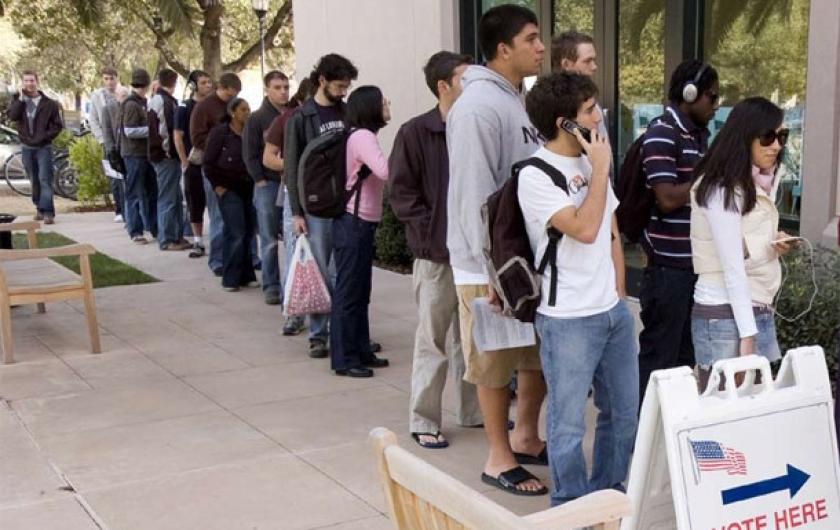LatinaLista — It doesn’t take a genius to know that the surest way to instill the pride of civic participation in young voters is to make the experience positive. But a new report from the multi-racial civil rights organization Advancement Project and the national advocacy for youth political participation, OurTime.org, found that some young voters are “walking away” from the voting experience with anything but a positive attitude.
The Time Tax: America’s Newest Form of Voter Suppression for Millennials, and How it Must Be Eliminated to Make Voting Accessible for the Next Generation finds that Millennials (18-29),especially those of color, have been adversely affected by the new restrictive voting policies passed in some states, in the name of making voting more “secure.”
What has resulted is that from getting Voter IDs to the actual voting experience, Millennials are subjected to long lines and inconvenient wait times. The report’s authors found, for example, that in some Florida counties there was a high correlation between young voters and long lines.
And for anyone who knows and/or works with young people, patience is not a virtue yet mastered by many young people. Subjecting young people to such inconvenience when trying to fulfill their civic duty doesn’t just leave Millennials frustrated but makes them think twice about the value of their vote.
Reactions that conservative proponents of these new voter suppression laws may have had in mind when drafting them since Millennial voters are known to lean towards Democrat and Libertarian tickets.
A few of the report’s findings include:
- According to U.S. Census data, 61% of millennials are non-Hispanic White, compared to more than 70% of adults aged 30 and over. Among millennials, 19% are Latino, 14% are African-American, 5% are Asian-American, and 1% identify themselves as “Other.”
- In all states (with or without photo ID laws), young voters of color were asked to show ID more often than White youth in 2012. In a Black Youth Project survey, Black young people reported that a lack of required identification prevented them from voting at nearly four times the rate of their White counterparts – 17.3% compared to 4.7%. Latino youth, at 8.1%, were also affected at higher rates.
- In Fairfax County, Virginia, in 2012, precincts with a greater density of voters between the ages of 25 and 34 had later closing times. In Virginia’s Prince William County, voters under 24, and between 25 to 34, had much higher percentages of voters casting their ballots after the official close of polls.
- In Miami-Dade, Florida, which had some of the nation’s longest voting lines in 2012, people of color and young voters generally faced the longest waits. More than 20% of voters in Miami-Dade County were under 30, and closing times were later in precincts where there were more voters under 30.
The emphasis of the report is that these disparities and singling out of Millennials of color at the voting booths have to be addressed before the next election lest these young people decide all the hassle isn’t worth exercising their civic right. As it is, while more young people are voting, as a group they still lag behind other demographics.
“The ballot box is the one place where we are all supposed to be equal, whether young or old, rich or poor, and no matter one’s race,” said Katherine Culliton-González, director of Advancement Project’s Voter Protection Program. “These fundamental American values are broken, and we need to fix it now for the generations to come. We’ve submitted our report’s recommendations to the Presidential Commission on Election Administration, calling on them to making it easier, not harder, for young voters to participate in our democracy.”



